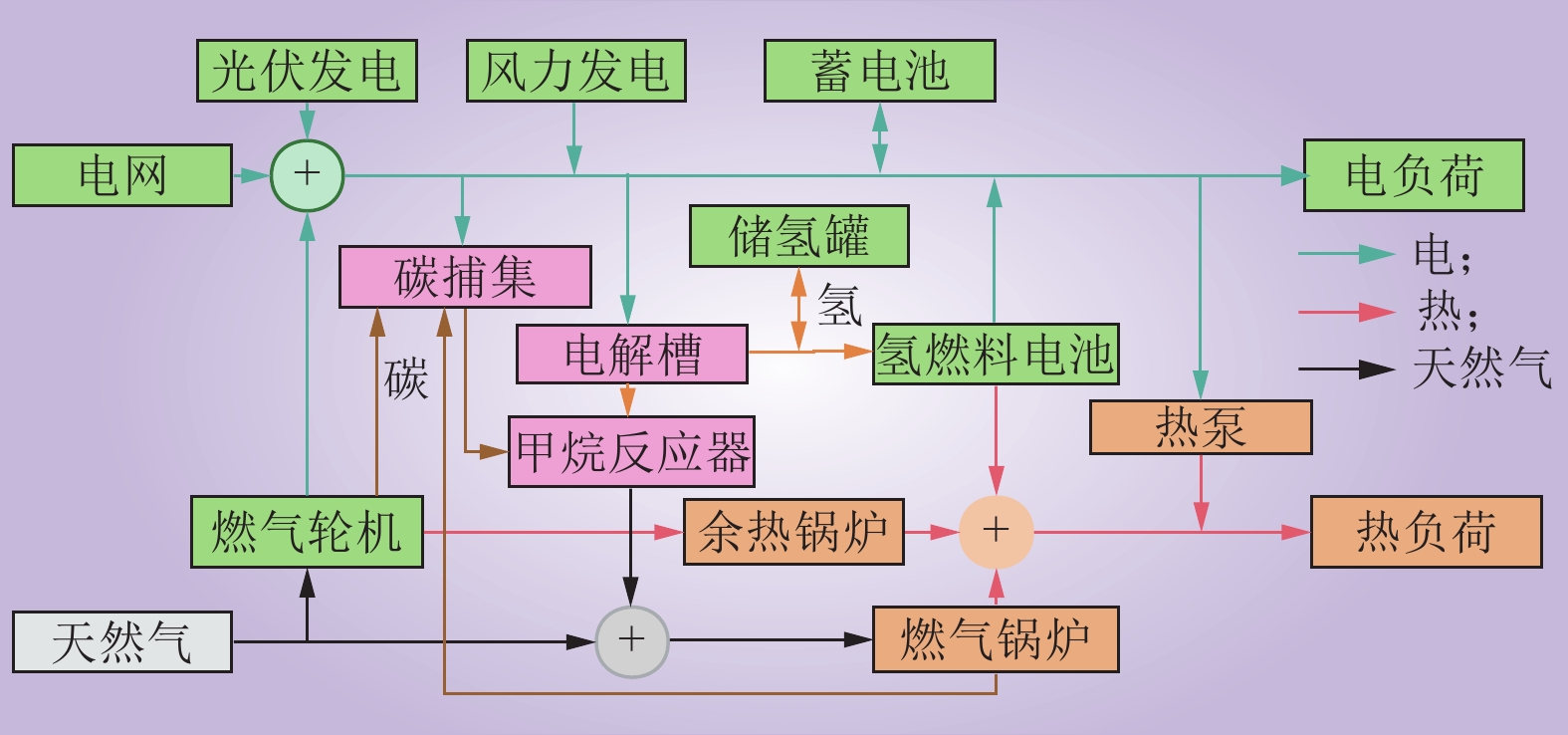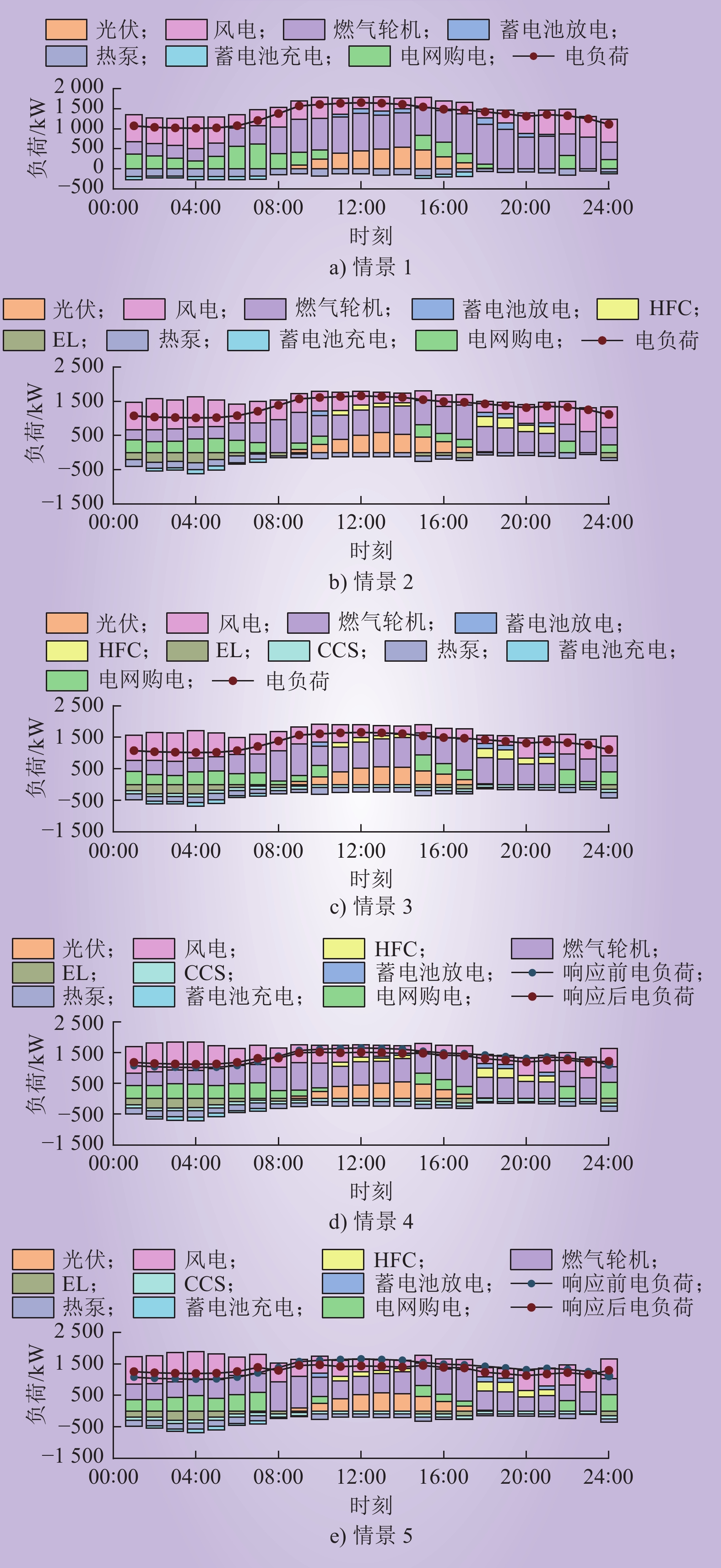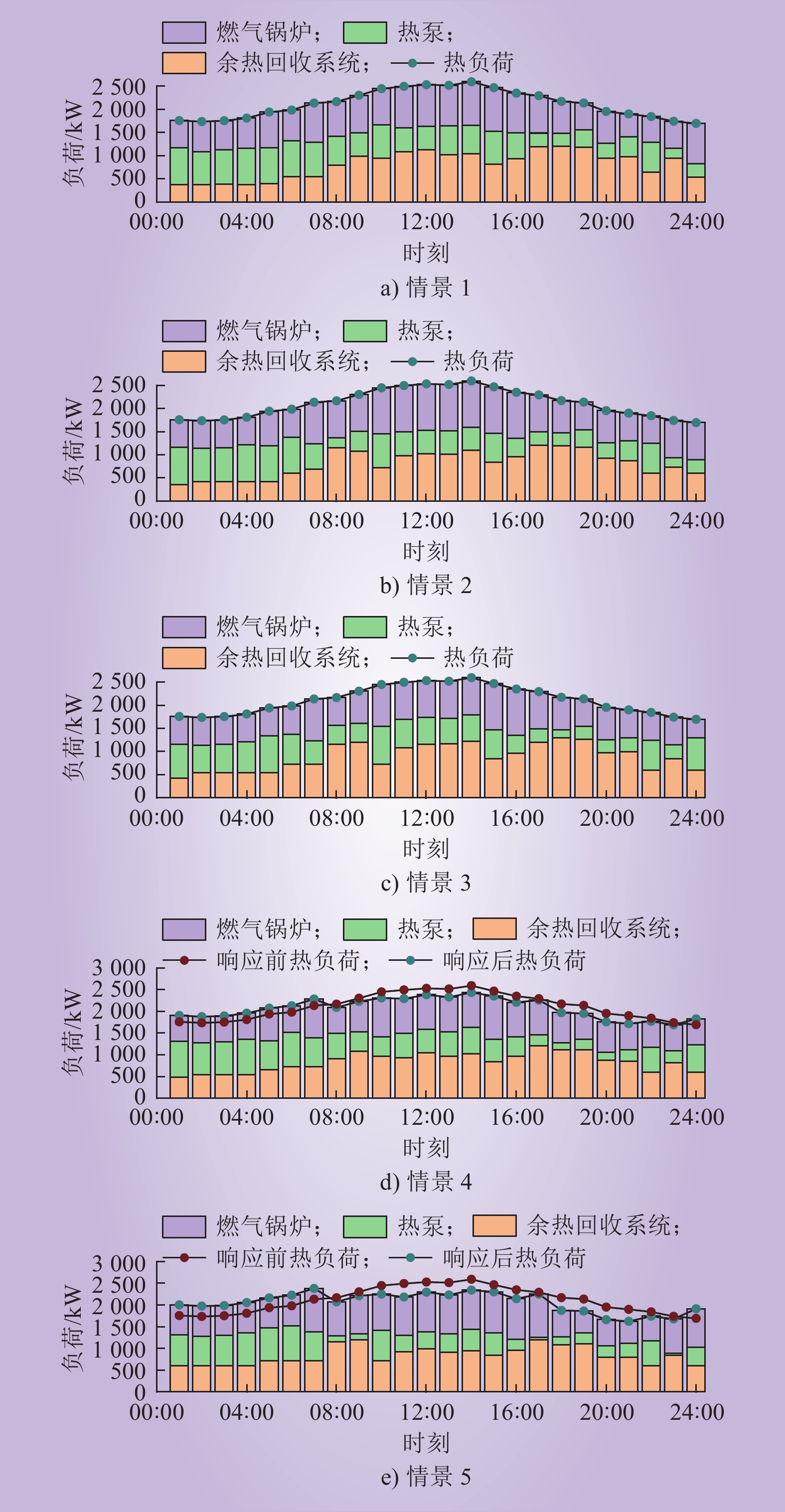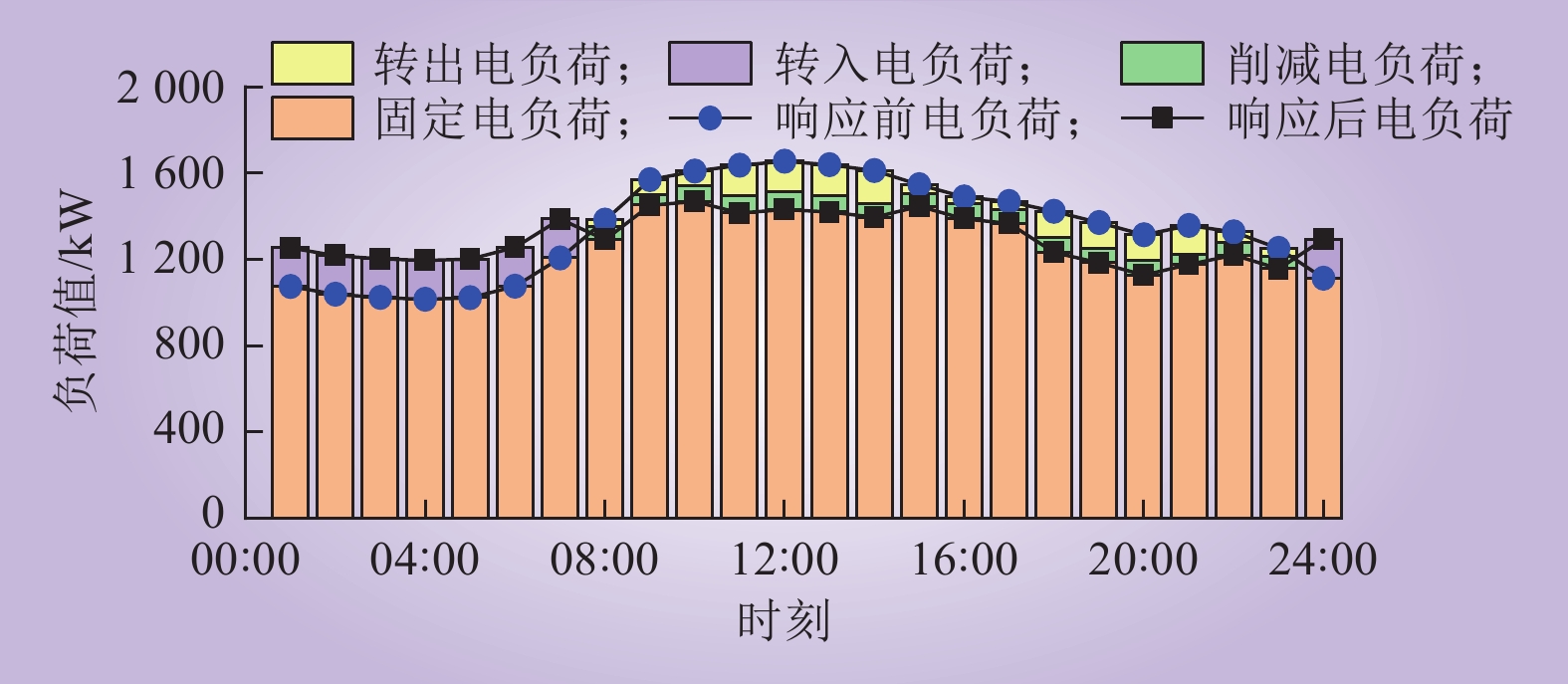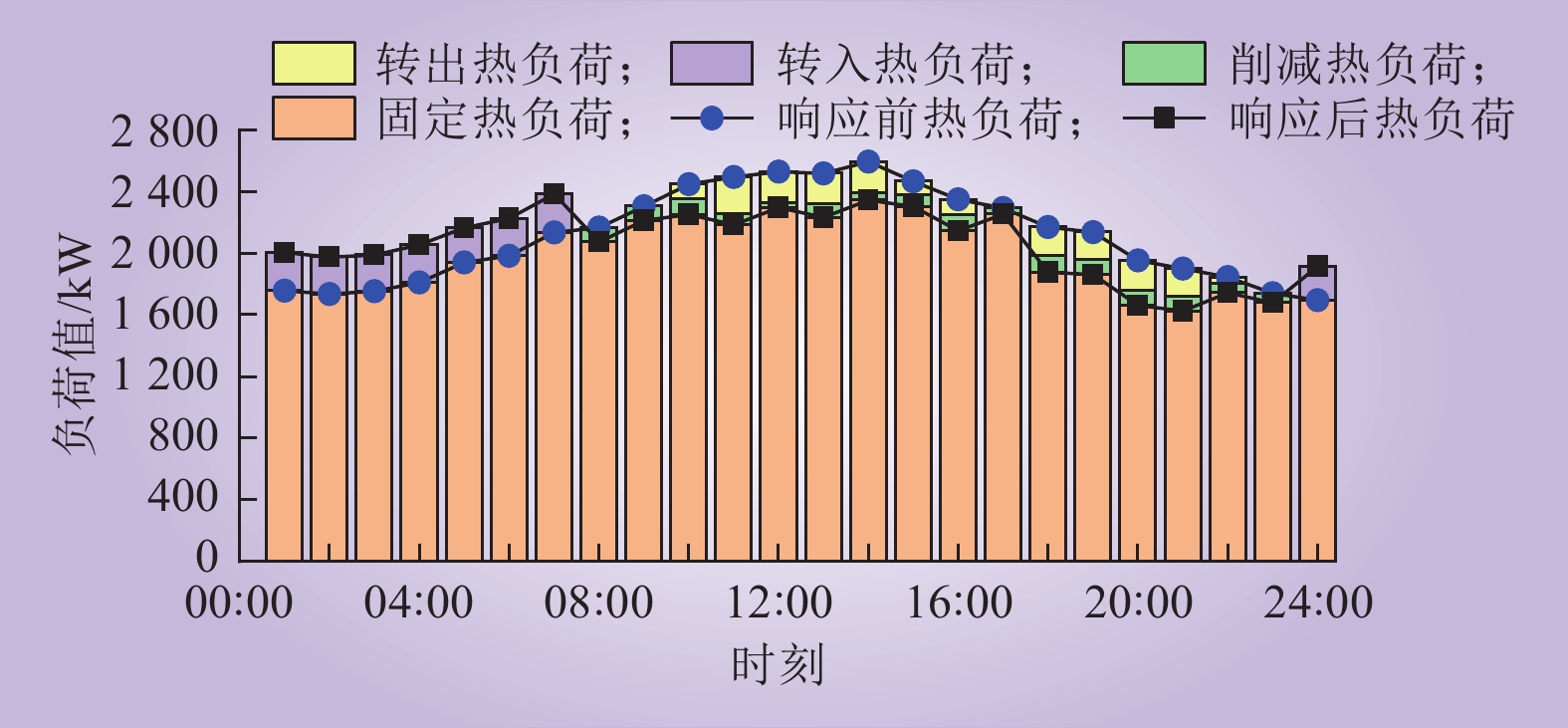| 1 |
田福银, 马骏, 王灿, 等. 基于双层主从博弈的综合能源系统多主体低碳经济运行策略[J]. 中国电力, 2022, 55 (11): 184- 193.
|
|
TIAN Fuyin, MA Jun, WANG Can, et al. Multi-agent low-carbon and economy operation strategy of integrated energy system based on bi-level master-slave game[J]. Electric Power, 2022, 55 (11): 184- 193.
|
| 2 |
孙强, 谢典, 聂青云, 等. 含电-热-冷-气负荷的园区综合能源系统经济优化调度研究[J]. 中国电力, 2020, 53 (4): 79- 88.
|
|
SUN Qiang, XIE Dian, NIE Qingyun, et al. Research on economic optimization scheduling of park integrated energy system with electricity-heat-cool-gas load[J]. Electric Power, 2020, 53 (4): 79- 88.
|
| 3 |
骆钊, 刘德文, 沈鑫, 等. 综合能源系统优化运行技术研究综述[J]. 电力建设, 2022, 43 (12): 3- 14.
|
|
LUO Zhao, LIU Dewen, SHEN Xin, et al. Review of research on optimal operation technology of integrated energy system[J]. Electric Power Construction, 2022, 43 (12): 3- 14.
|
| 4 |
LI Z M, XU Y, FENG X, et al. Optimal stochastic deployment of heterogeneous energy storage in a residential multienergy microgrid with demand-side management[J]. IEEE Transactions on Industrial Informatics, 2021, 17 (2): 991- 1004.
|
| 5 |
SHARMA S, VERMA A, XU Y, et al. Robustly coordinated bi-level energy management of a multi-energy building under multiple uncertainties[J]. IEEE Transactions on Sustainable Energy, 2021, 12 (1): 3- 13.
DOI
|
| 6 |
刘玮, 万燕鸣, 熊亚林, 等. 碳中和目标下电解水制氢关键技术及价格平准化分析[J]. 电工技术学报, 2022, 37 (11): 2888- 2896.
|
|
LIU Wei, WAN Yanming, XIONG Yalin, et al. Key technology of water electrolysis and levelized cost of hydrogen analysis under carbon neutral vision[J]. Transactions of China Electrotechnical Society, 2022, 37 (11): 2888- 2896.
|
| 7 |
施泉生, 丁建勇, 晏伟, 等. 基于能量流含P2G电-热系统风电消纳优化运行[J]. 太阳能学报, 2021, 42 (5): 394- 400.
|
|
SHI Quansheng, DING Jianyong, YAN Wei, et al. Optimal operation of wind power accommodation in electric-thermal system with P2G based on energy flow model[J]. Acta Energiae Solaris Sinica, 2021, 42 (5): 394- 400.
|
| 8 |
郭梦婕, 严正, 周云, 等. 含风电制氢装置的综合能源系统优化运行[J]. 中国电力, 2020, 53 (1): 115- 123, 161.
|
|
GUO Mengjie, YAN Zheng, ZHOU Yun, et al. Optimized operation design of integrated energy system with wind power hydrogen production[J]. Electric Power, 2020, 53 (1): 115- 123, 161.
|
| 9 |
孙惠娟, 蒙锦辉, 彭春华. 风–光–水–碳捕集多区域虚拟电厂协调优化调度[J]. 电网技术, 2019, 43 (11): 4040- 4051.
|
|
SUN Huijuan, MENG Jinhui, PENG Chunhua. Coordinated optimization scheduling of multi-region virtual power plant with wind-power/photovoltaic/hydropower/carbon-capture units[J]. Power System Technology, 2019, 43 (11): 4040- 4051.
|
| 10 |
廖跃洪, 陈洁, 杨彦飞, 等. 考虑碳捕集电厂综合灵活运行下的含P2G和光热电站虚拟电厂优化调度[J]. 电力建设, 2022, 43 (4): 20- 27.
|
|
LIAO Yuehong, CHEN Jie, YANG Yanfei, et al. Optimal scheduling of virtual power plant with P2G and photo-thermal power plant considering the flexible operation of carbon capture power plants[J]. Electric Power Construction, 2022, 43 (4): 20- 27.
|
| 11 |
陈登勇, 刘方, 刘帅. 基于阶梯碳交易的含P2G-CCS耦合和燃气掺氢的虚拟电厂优化调度[J]. 电网技术, 2022, 46 (6): 2042- 2053.
|
|
CHEN Dengyong, LIU Fang, LIU Shuai. Optimization of virtual power plant scheduling coupling with P2G-CCS and doped with gas hydrogen based on stepped carbon trading[J]. Power System Technology, 2022, 46 (6): 2042- 2053.
|
| 12 |
杨建宾, 谢丽蓉, 宋新甫, 等. 基于可再生能源的碳捕集-电转气协同运行方法[J]. 智慧电力, 2022, 50 (12): 70- 78.
DOI
|
|
YANG Jianbin, XIE Lirong, SONG Xinfu, et al. Collaborative operation method of carbon capture-P2G based on renewable energy[J]. Smart Power, 2022, 50 (12): 70- 78.
DOI
|
| 13 |
ZHAO B N, CONEJO A J, SIOSHANSI R. Coordinated expansion planning of natural gas and electric power systems[J]. IEEE Transactions on Power Systems, 2018, 33 (3): 3064- 3075.
DOI
|
| 14 |
HE Y B, SHAHIDEHPOUR M, LI Z Y, et al. Robust constrained operation of integrated electricity-natural gas system considering distributed natural gas storage[J]. IEEE Transactions on Sustainable Energy, 2018, 9 (3): 1061- 1071.
|
| 15 |
张鹏, 蒯圣宇, 刘维, 等. 考虑双侧不确定性的负荷聚集商需求响应资源规划[J]. 电力需求侧管理, 2021, 23 (1): 49- 54.
|
|
ZHANG Peng, KUAI Shengyu, LIU Wei, et al. Demand response resources planning for load aggregators considering bilateral uncertainty[J]. Power Demand Side Management, 2021, 23 (1): 49- 54.
|
| 16 |
张勇, 范斯达, 高海荣, 等. 融合柔性负荷和碳交易机制的矿山综合能源系统运行优化[J]. 电力系统及其自动化学报, 2023, 35 (4): 148- 158.
|
|
ZHANG Yong, FAN Sida, GAO Hairong, et al. Operation optimization of coal mine integrated energy system integrating flexible load and carbon trading mechanism[J]. Proceedings of the CSU-EPSA, 2023, 35 (4): 148- 158.
|
| 17 |
侯慧, 徐焘, 肖振锋, 等. 计及可调控负荷的发用电一体化综合优化调度[J]. 电网技术, 2020, 44 (11): 4294- 4301.
|
|
HOU Hui, XU Tao, XIAO Zhenfeng, et al. Generation and load integrated optimal scheduling considering adjustable load[J]. Power System Technology, 2020, 44 (11): 4294- 4301.
|
| 18 |
周伟, 孙永辉, 谢东亮, 等. 计及改进阶梯型碳交易和热电联产机组灵活输出的园区综合能源系统低碳调度[J]. 电网技术: 1–12[2023-10-24].https://doi.org/10.13335/j.1000-3673.pst.2022.2093.
|
|
ZHOU Wei, SUN Yonghui, XIE Dongliang, et al. Low-carbon dispatch of park-level integrated energy system considering improved ladder-type carbon trading and flexible output of combined heat and power unit[J/OL]. Power System Technology: 1–12[2023-10-24].https://doi.org/10.13335/j.1000-3673.pst.2022.2093.
|
| 19 |
李鹏, 韩建沛, 殷云星, 等. 电转氢作为灵活性资源的微网容量多目标优化配置[J]. 电力系统自动化, 2019, 43 (17): 28- 35, 139.
DOI
|
|
LI Peng, HAN Jianpei, YIN Yunxing, et al. Multi-objective optimal capacity configuration of microgrid with power to hydrogen as flexible resource[J]. Automation of Electric Power Systems, 2019, 43 (17): 28- 35, 139.
DOI
|
| 20 |
MIRJALILI S, SAREMI S, MIRJALILI S M, et al. Multi-objective grey wolf optimizer[J]. Expert Systems with Applications, 2016, 47, 106- 119.
|
| 21 |
龙文, 赵东泉, 徐松金. 求解约束优化问题的改进灰狼优化算法[J]. 计算机应用, 2015, 35 (9): 2590- 2595.
|
|
LONG Wen, ZHAO Dongquan, XU Songjin. Improved grey wolf optimization algorithm for constrained optimization problem[J]. Journal of Computer Applications, 2015, 35 (9): 2590- 2595.
|
| 22 |
LU C, GAO L, LI X Y, et al. A hybrid multi-objective grey wolf optimizer for dynamic scheduling in a real-world welding industry[J]. Engineering Applications of Artificial Intelligence, 2017, 57, 61- 79.
|
| 23 |
张娜, 任强, 刘广忱, 等. 基于VMD-GWO-ELMAN的光伏功率短期预测方法[J]. 中国电力, 2022, 55 (5): 57- 65.
|
|
ZHANG Na, REN Qiang, LIU Guangchen, et al. PV power short-term forecasting method based on VMD-GWO-ELMAN[J]. Electric Power, 2022, 55 (5): 57- 65.
|
| 24 |
王敏, 唐明珠. 一种新型非线性收敛因子的灰狼优化算法[J]. 计算机应用研究, 2016, 33 (12): 3648- 3653.
|
|
WANG Min, TANG Mingzhu. Novel grey wolf optimization algorithm based on nonlinear convergence factor[J]. Application Research of Computers, 2016, 33 (12): 3648- 3653.
|
| 25 |
张运厚, 李婉莹, 董福贵. 基于DE-GWO-SVR的中长期电力需求预测[J]. 中国电力, 2021, 54 (9): 83- 88.
|
|
ZHANG Yunhou, LI Wanying, DONG Fugui. Medium and long-term power demand forecasting based on DE-GWO-SVR[J]. Electric Power, 2021, 54 (9): 83- 88.
|
| 26 |
葛磊蛟, 赵康, 孙永辉, 等. 基于孪生网络和长短时记忆网络结合的配电网短期负荷预测[J]. 电力系统自动化, 2021, 45 (23): 41- 50.
|
|
GE Leijiao, ZHAO Kang, SUN Yonghui, et al. Short-term load forecasting of distribution network based on combination of siamese network and long short-term memory network[J]. Automation of Electric Power Systems, 2021, 45 (23): 41- 50.
|
| 27 |
邓杰, 姜飞, 王文烨, 等. 考虑电热柔性负荷与氢能精细化建模的综合能源系统低碳运行[J]. 电网技术, 2022, 46 (5): 1692- 1702.
|
|
DENG Jie, JIANG Fei, WANG Wenye, et al. Low-carbon optimized operation of integrated energy system considering electric-heat flexible load and hydrogen energy refined modeling[J]. Power System Technology, 2022, 46 (5): 1692- 1702.
|
| 28 |
穆云飞, 唐志鹏, 吴志军, 等. 计及虚拟储能的电-水-热综合能源系统日前优化调度方法[J]. 电力系统自动化, 2023, 47 (24): 11- 21.
|
|
MU Yunfei, TANG Zhipeng, WU Zhijun, et al. Optimal day-ahead scheduling method for electricity-water-heat integrated energy system considering virtual energy storage[J]. Automation of Electric Power Systems, 2023, 47 (24): 11- 21.
|
| 29 |
马斌, 杨立波, 陈辰, 等. 计及需求响应的综合能源系统协同优化策略[J]. 可再生能源, 2023, 41 (5): 676- 684.
|
|
MA Bin, YANG Libo, CHEN Chen, et al. Collaborative optimization strategy of integrated energy system considering demand response[J]. Renewable Energy Resources, 2023, 41 (5): 676- 684.
|
| 30 |
赵海彭, 苗世洪, 李超, 等. 考虑冷热电需求耦合响应特性的园区综合能源系统优化运行策略研究[J]. 中国电机工程学报, 2022, 42 (2): 573- 589.
|
|
ZHAO Haipeng, MIAO Shihong, LI Chao, et al. Research on optimal operation strategy for park-level integrated energy system considering cold-heat-electric demand coupling response characteristics[J]. Proceedings of the CSEE, 2022, 42 (2): 573- 589.
|



